Regal Regie: 1956 Renault Dauphine brochure
Posted on Aug 2, 2018 in Featured | 2 comments
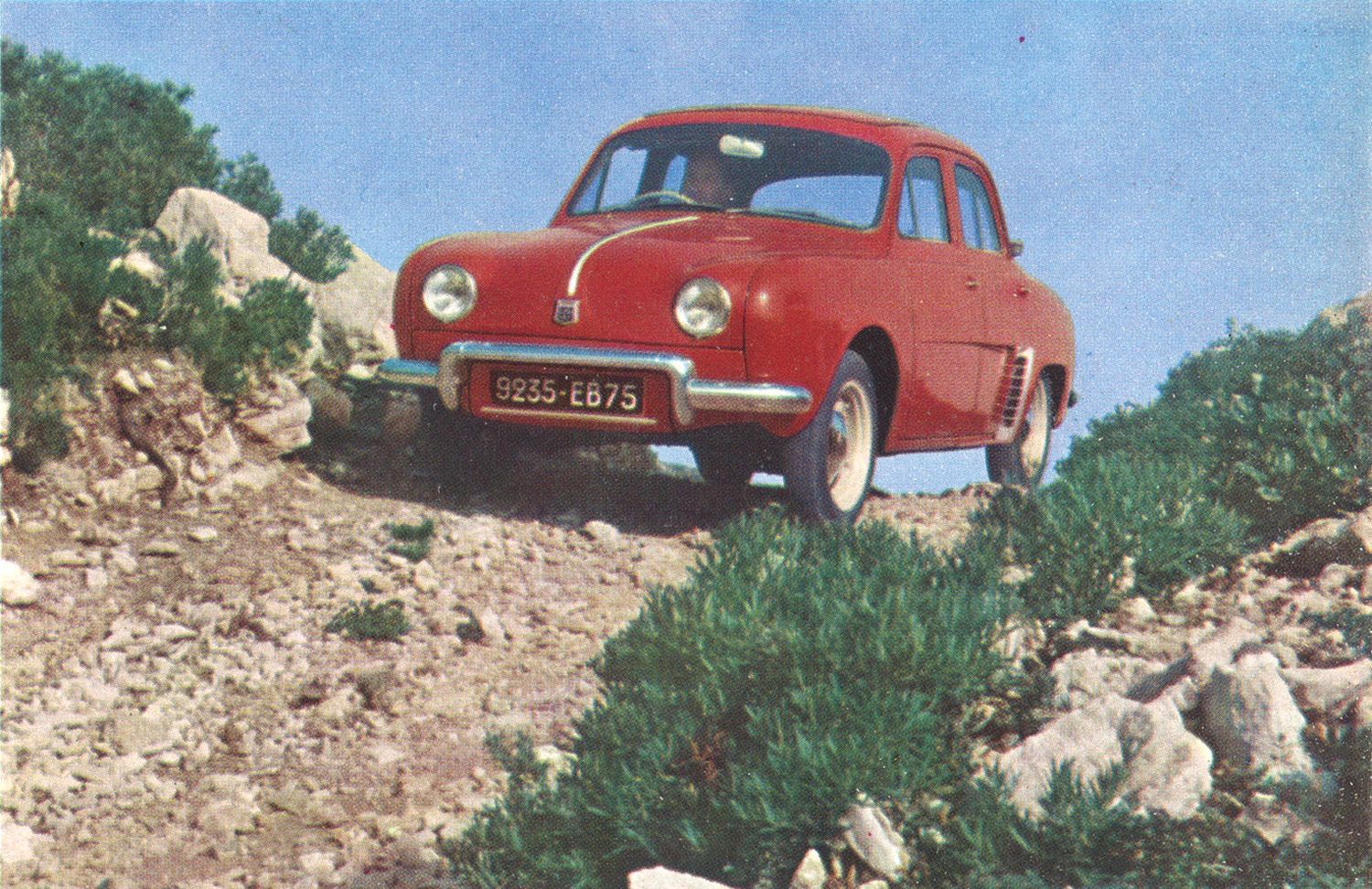
Before the Volkswagen Sedan became an American best-seller, the title of the best-selling imported car was held by an attractive little rear-engined French car — the Renault Dauphine. This product of Renault Régie Nationale France was designed from the start as a car for the masses, as the automaker itself explained in rather self-deprecating fashion in this large-scale, undated (presumed 1956), printed-in-France brochure:
“It must be said that the Dauphine is not intended to amaze the devotees of advanced design, the high performance fans. Our ambition was simply to serve and please a large number of ordinary motorists, both men and women, who not only value their cars but are equally concerned with the comfort and safety of their children… Do not attempt to compare it with the luxury and sports cars you no doubt dream about, but do give it a try, even though it may not correspond exactly to your present needs.”
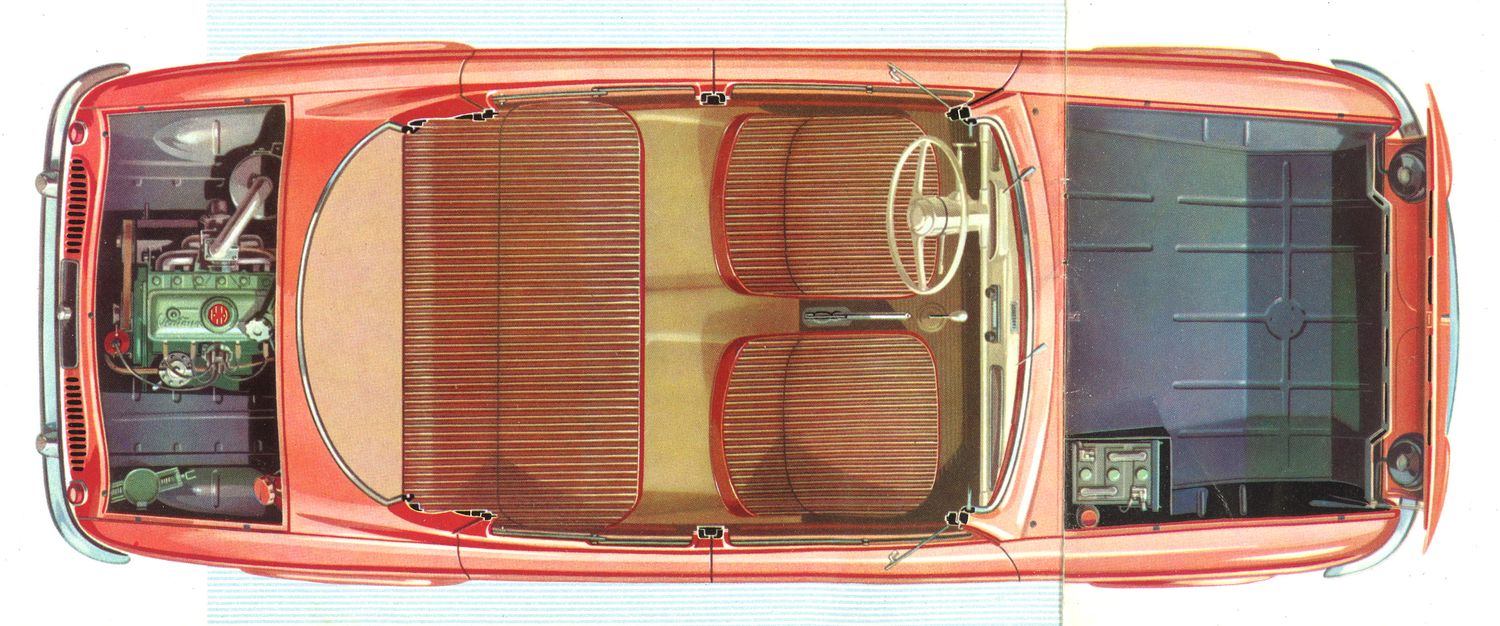
The little sedan sold in good numbers here for a time, but this trickled off to nothing, and Dauphines are rarely seen on American roads today. Retired Hemmings Sports & Exotic Car columnist Karl Ludvigsen wrote a recollection of his period of Dauphine ownership, of how, despite the car’s charms, its U.S. dealer network failed it.
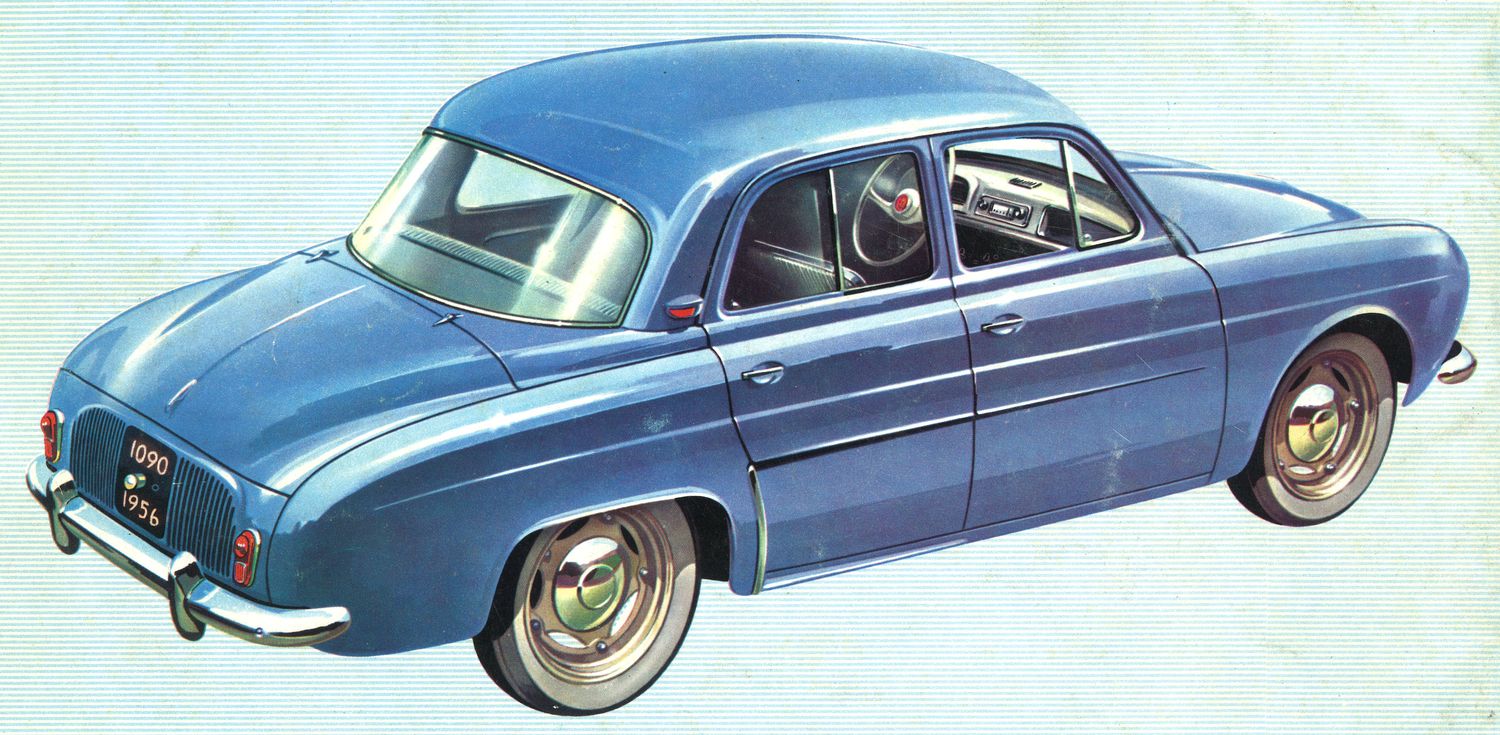
The Dauphine was even the basis for a little-remembered battery-powered electric car, the Henney Kilowatt.
It’s one of those cars that few remember, but we feel offers great bang for the collector buck. Have you ever driven a Dauphine?
Click below to enlarge the brochure images.

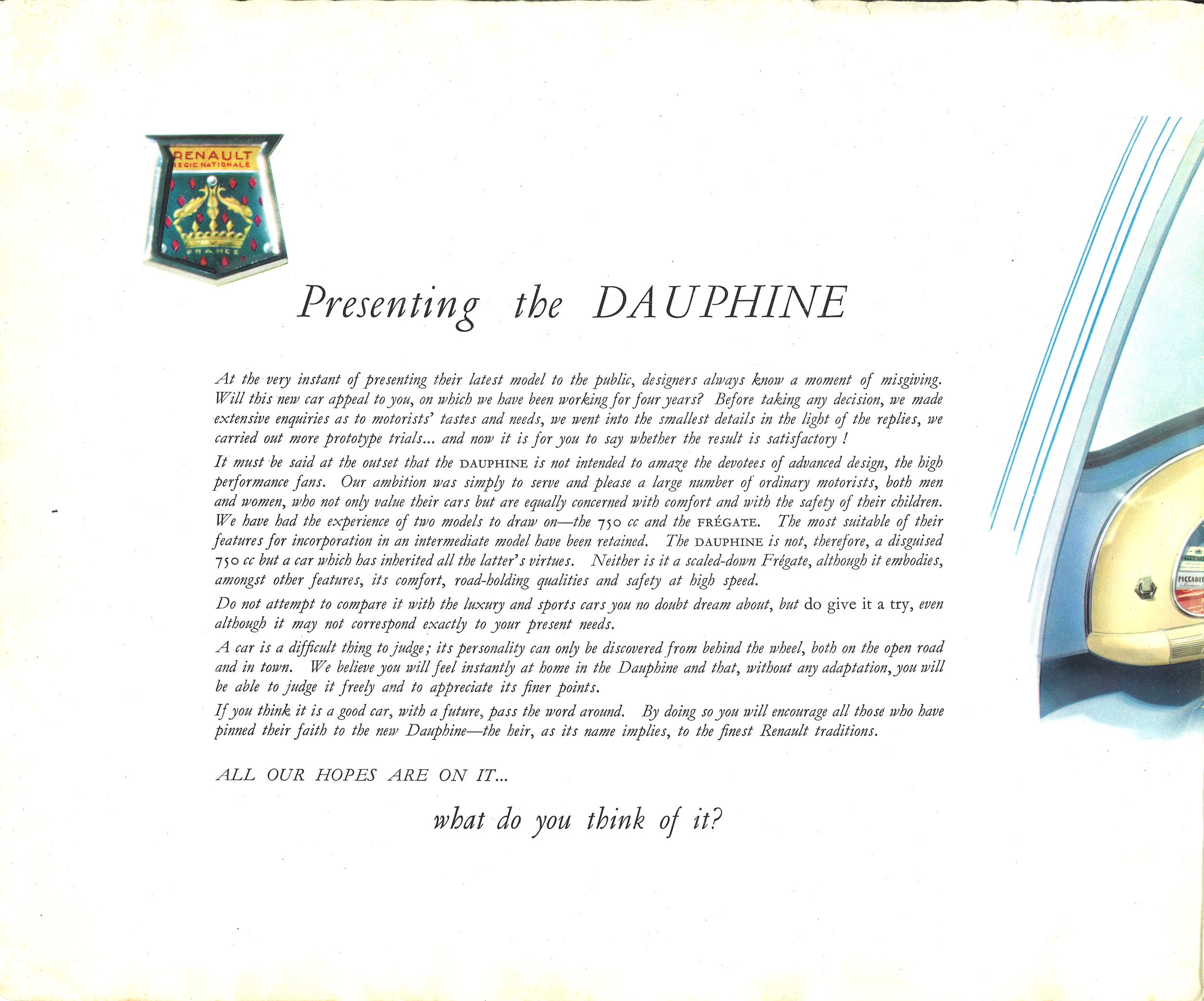
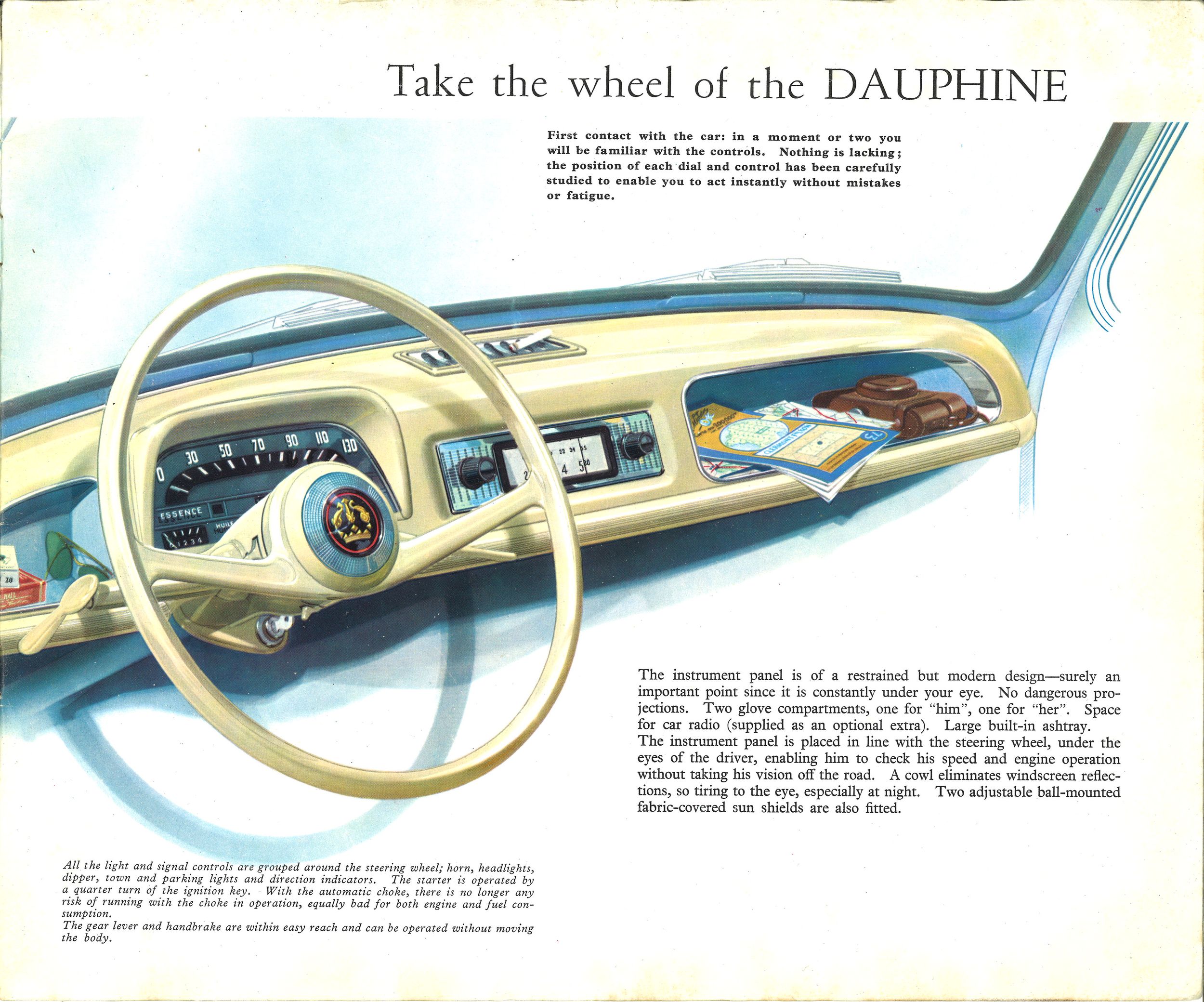
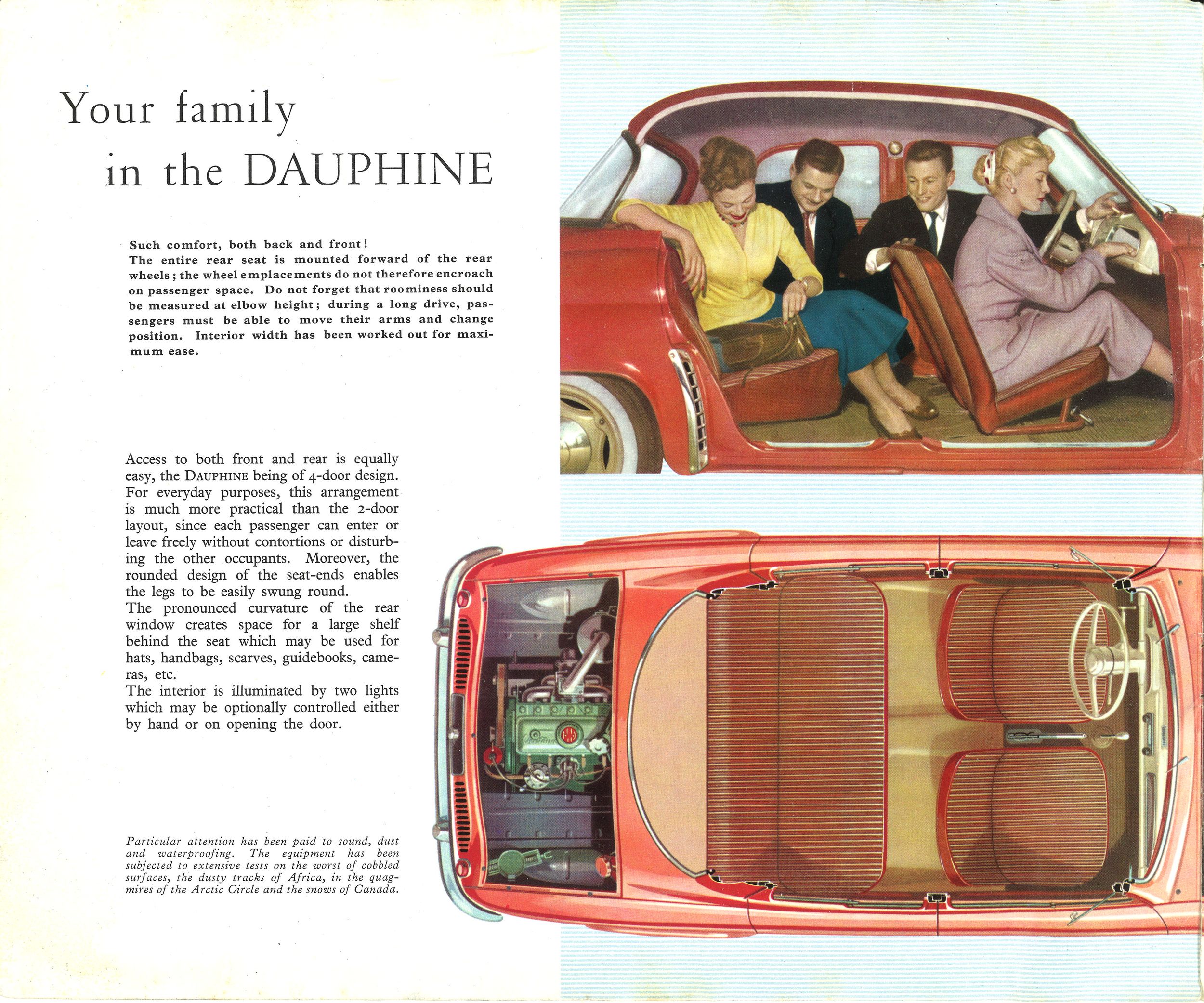

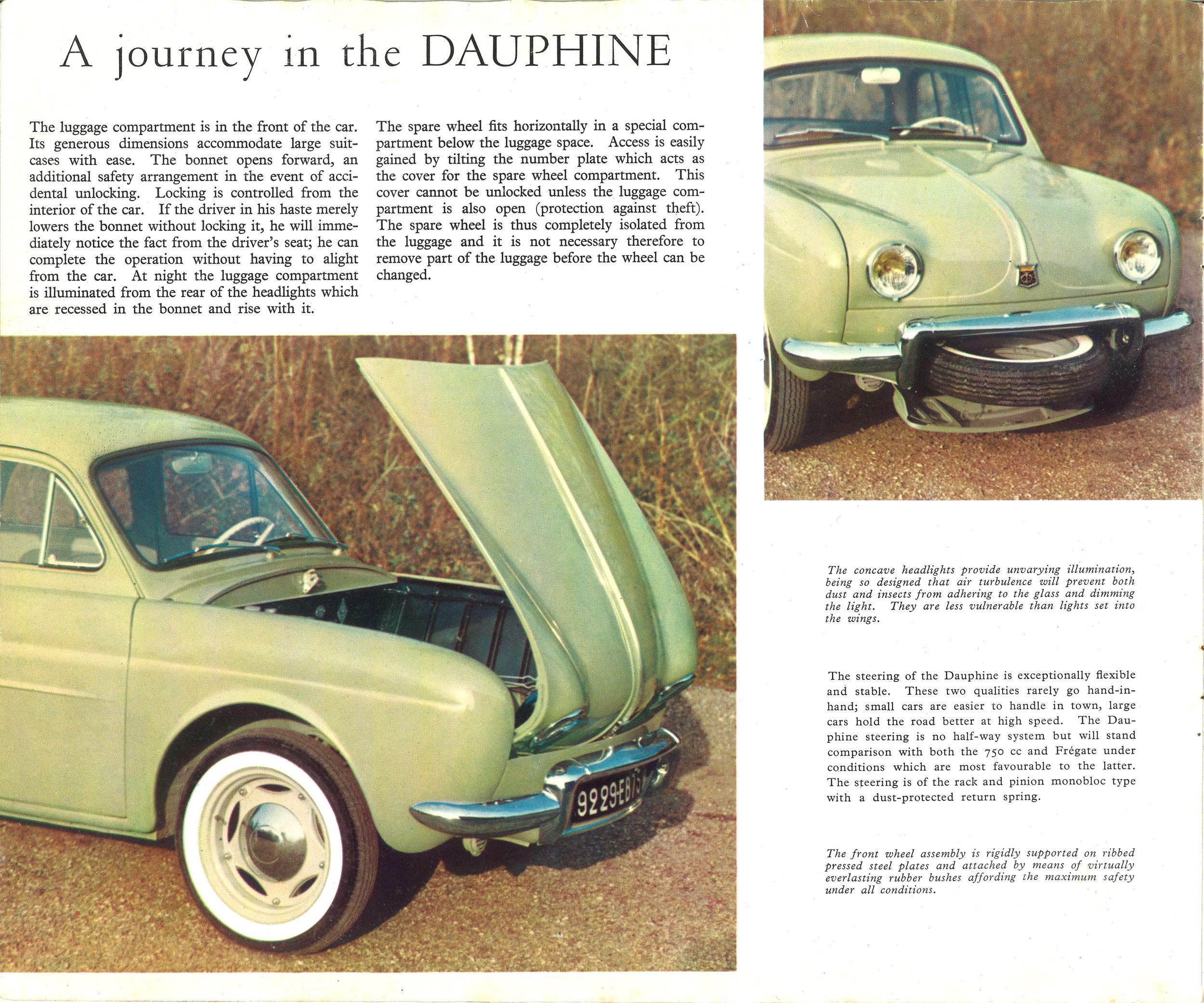
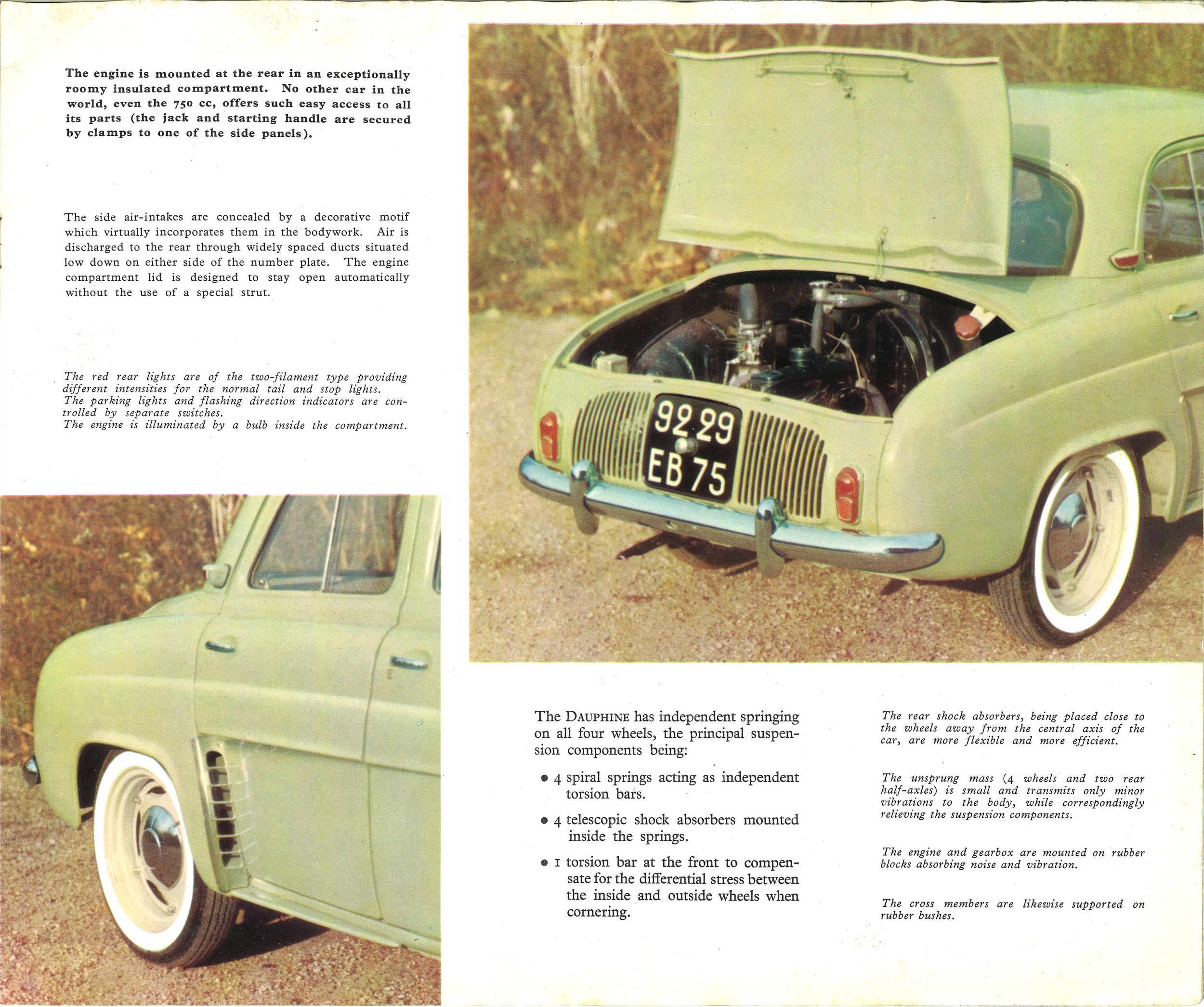





.gif)


Did these have a swing axle in back? The brochure pic confuses me.
It had two swing axles in the rear that extended out the side of the transmission housing. The Engine sat behind them and the transmission sat between the axles and the center of the car. The VW and Corvair were balanced so there was 70% of the weight on the rear wheels and 30% on the front. The Renault was in a 60/40% ratio from back to front and this gave a much better stability factor, especially when in a spin situation on ice. The Engine complete only weighed about 170 lbs. and when I changed the clutch, I could get into the engine compartment and lift it out, balance it on the rear panel and then place it on the ground. after changing the clutch, replace it by reversing the procedure. It took less than two hours to do this. Part of this time was draining the water from the cooling system and replacing it. The radiator stayed mounted to the car, in front of the engine.